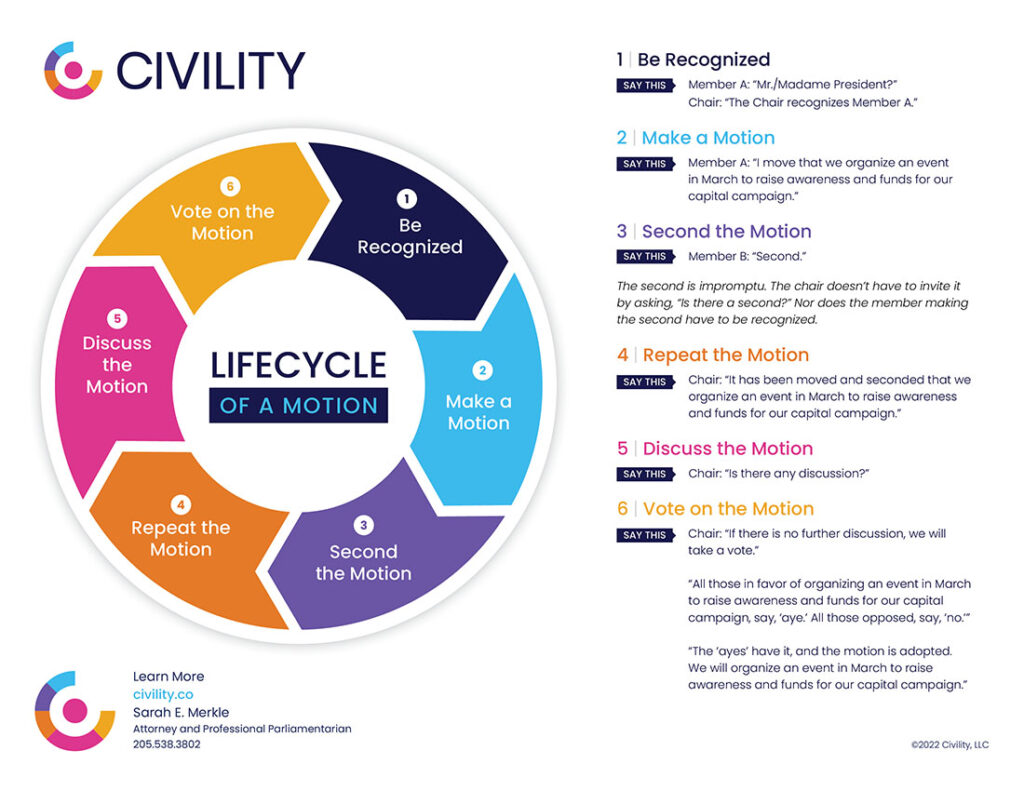If you’re interested in using parliamentary procedure to get things done in your organization, one of the simplest ways to participate is by providing a “second” when that’s needed. So, what is a second? And what is the right way to offer a second to move business along? Here’s a quick primer on the concept of a second.
1. The Meaning of a Second
“Second” in parliamentary procedure is short for “a second person”—another member in addition to the first that just spoke up to make a motion or proposal that the group take a certain action.
The second does not imply agreement with the content of the motion that was just proposed. But it does indicate agreement that the motion warrants the group’s time.
Conversely, no second means no go. The motion is dead on arrival if, after a few moments, no member hollers out, “Second.” But if there is a second, the motion process will continue to discussion and eventually a vote.
So, seconds are critical. To say, “Second” takes only a second. It’s only one word. But it communicates quickly and powerfully that at least two members think this idea is worth everyone’s consideration.
2. The Person Providing a Second
Only a member of the group may give a second. If nonmembers are allowed at the meeting, they may only observe, not participate in the motion-making or voting processes.
3. The Proper Time for a Second
A second is one of six steps of processing a motion. Motions are a core piece of parliamentary procedure—the method of accomplishing business in an orderly fashion. And “seconding the motion” is step #3 in that process.
First, a member must be recognized by the Chair. Next, that member has to verbalize the motion by saying, “I move that….” Then, as soon as the motion has been made, another member should say, “I second the motion,” or should simply call out, “Second.”
4. The Details on Offering a Second
It is fine to wait for the Chair to invite a second before offering it, but it is also okay to just save time and say, “Second” without waiting for an invitation.
In a very large group, it is helpful for the seconder to briefly stand while saying “Second” so that the Chair and all those present can clearly hear and see that a second is being made.
5. The Motions Which Don’t Need a Second
Motions made in small groups or committees do not require a second. Often, the committee has been formed for the exact purpose of discussing a particular topic, so there’s no need to confirm everyone’s willingness to proceed on that issue.
Also, some secondary motions don’t require a second at all. These particular motions are not main motions. They’re procedural in nature and vary somewhat as to how they’re processed.
The motions which do not need a second include Question of Privilege (used to raise a very urgent issue), Call for Orders of the Day (used to insist the agenda be followed), Point of Order (used to question the proceedings of the meeting), and Point of Information or Request for Information (used to clarify substantive information)—among others.
See the Motions Quick Guide downloadable PDF in the Resources section of this site for more details on these and other motions.
Where to Learn More


